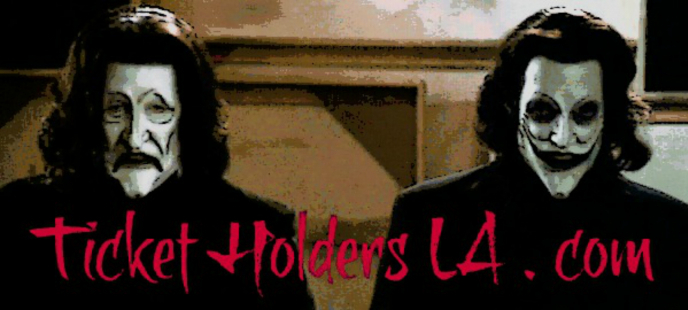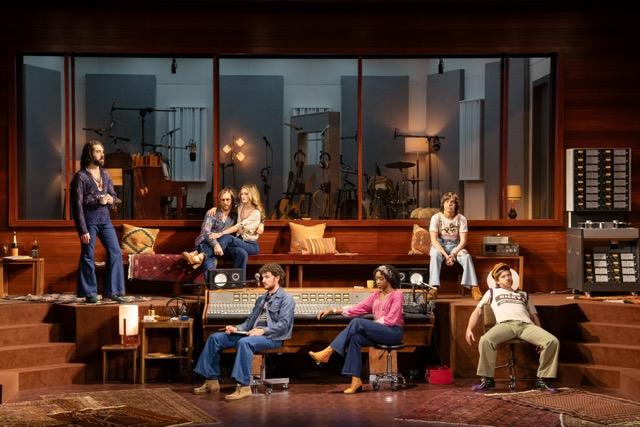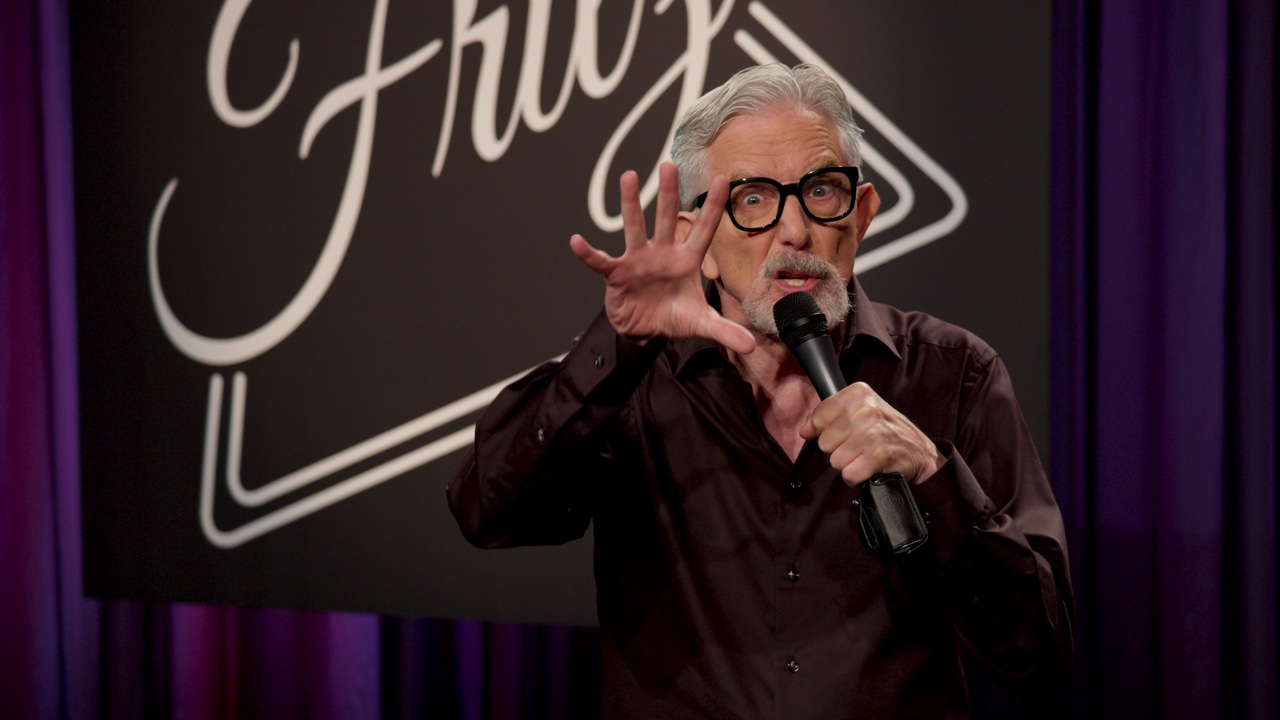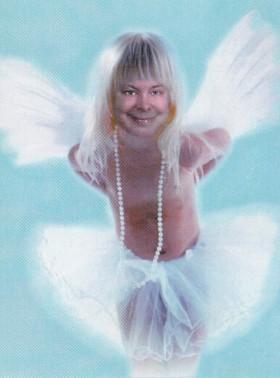- HOME
- TICKETHOLDER AWARDS 2025 - Part One
- TICKETHOLDER AWARDS 2025 - Part Two
- CURRENT REVIEWS
- CRISS-MESS UPDATE 2025
- "WAITING FOR WALK"
- TRAVIS MONOLOGUES 2025
- FEATURES & INTERVIEWS
- MUSIC & OUT OF TOWN REVIEWS
- RANTS & RAVINGS
- MEMORIES OF GENIUS
- H.A. EAGLEHART: HIEW'S VIEWS
- TRAVIS ART FOR SALE - Collection 1
- TRAVIS ART FOR SALE - Collection 2
- TRAVIS ART FOR SALE - Collection 3
- TRAVIS ART FOR SALE - Collection 4
- TRAVIS ART FOR SALE - Collection 5
- TRAVIS ART FOR SALE - Collection 6
- TRAVIS ART FOR SALE - Saints & Sinners
- TRAVIS ART FOR SALE - Pet Portraits on Commission
- COMPOSER SONATA: Hershey Felder Portraits
- TRAVIS' ANCIENT & NFS ART
- TRAVIS' PHOTOGRAPHY
- PHOTOS: FINDING MY MUSE
- REVIEW ARCHIVES: WINTER 2025 to... ?
- REVIEW ARCHIVES: WINTER - FALL 2025
- REVIEW ARCHIVES: SUMMER - WINTER 2024
- REVIEW ARCHIVES: FALL 2023 - SPRING 2024
- A LIFE IN PHOTOS [1946 - 1996]
- A LIFE IN PHOTOS [1997 - 2015]
- A LIFE IN PHOTOS [2016 - 2018]
- A LIFE IN PHOTOS [2019 - 2021]
- A LIFE IN PHOTOS [2022 - 2023]
- A LIFE IN PHOTOS [2024 - 2025]
- A LIFE IN PHOTOS [2026 to...
- LA DRAMA CRITICS CIRCLE AWARDS 2024
- TRAVIS' ACTING SITE & DEMO REELS: travismichaelholder.com
- CONTACT THLA
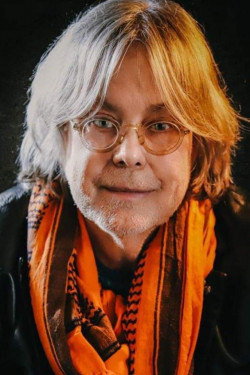
EVERYBODY'S GOT ONE
CURRENT REVIEWS
by TRAVIS MICHAEL HOLDER
"Critics watch a battle from a high place then come down to shoot the survivors." ~ Ernest Hemingway
Stereophonic
Photo by Julieta Cervantes
Pantages Theatre
In the for almost 40 years I’ve been reviewing theatre, friends often ask why I seldom venture into the lobby during intermission and famously leave directly after an opening night performance, stealthily avoiding most opening night parties and receptions. A great deal of the reason is because I really dislike being asked at that stage of the journey what I think about the show.
When cornered, the only answer I traditionally give is, “I don’t know… I haven’t started writing about it yet.” Truly, overnight or a day or two later is when many of my thoughts begin to formulate. Something I initially thought I really liked I see more clearly at that point. I realize the flaws—and, often, the complete opposite is also true.
I was completely unsure how I felt leaving the phenomenal LA premiere of the Broadway smash Stereophonic at the Pantages. It was a long and not always easy ride, especially since the dizzying view from the front row (thank you, Benny!) brought me immediately right back into the dysfunctional world of my 14 years in the music business dealing with epically difficult yet brilliant superstars on a daily basis. It took me overnight to decide how I felt about it but by morning light and not still stuck in the middle of three hours spent as a fly on the wall during a troubled year-long series of recording sessions creating a hit album back in the early 70s, I realized what a remarkable achievement it is.
Stereophonic is a brave and decidedly rule-breaking work that, thanks to the stark vision of director Daniel Aukin, often reminded me of being smackdab in the middle of a living Ingrid Bergman movie. His purposefully non-kinetic staging and performance style, that between the floor-shaking music and the heated arguments and the delving into the bandmembers’ messy relationships, featured long periods of dead silence and actors left onstage like unmoved pawns on a chessboard staring blankly out into the fourth wall or at one another. It seems obvious to me that the creators of this arresting nouveau Tony-winner for Best Play of 2024 didn’t give much of a crap about commercial considerations and box office success when it was originally mounted off-Broadway at Playwrights Horizons and that its surprisingly fearless Broadway producers miraculously went along with the concept. Perhaps that’s why it succeeds splendidly.
After toiling so long in the intensely competitive, astonishingly volatile, and drug-fueled world of the music business 50-plus years ago, experiencing Stereophonic, especially from the front row of the massive Pantages, was like old home week to me, as it was to my companion and best pal Taylor Gilbert who, like me, also spent some of her nicely wasted youth hanging out with some of the super-stoned and nutso musical geniuses of the day in recording sessions similar to the one explored here—albeit, I must state here, for her recalling a decade loooong after my own.
I kept thinking as much as it often felt like a three-hour prison term while watching it unfold, it must be a fascinating look behind the curtain by people who have never had the experience of observing such a crazy scene, something that, quite frankly, explains a lot of the reason I left the music business. In two parts and four acts, Stereophonic depicts a year in the life of a highly successful band trying against the odds to come together and create a new album. By the end of the evening, it’s hard not to imagine the actors must be many times more exhausted than I was watching it from the comfort of my theatre seat.
If anything struck me as an Achilles’ heel in playwright David Adjmi’s unique slice-of-life look at a year in the artistic and personal lives of this dysfunctional group of musicians, it’s that with any work of art, I tend to yearn for some revelation offered me as a viewer. There’s not much resolved by the end of Adjmi’s adventure, except to wonder whether or not any of these people will ever want to work with each other again, let alone be involved in the personal relationships that develop or unravel during the course of their fateful year together.
I made a comment to Taylor referring to Will Butler’s Tony-nominated score for Stereophonic as modern. She laughed and said, “Modern? Really?” I mentioned Butler’s background as the major force behind the band Arcade Fire and that I thought his score clearly reflects, as does Enver Chakartash’s delightfully hippie-oriented costuming and David Zinn’s diagonally-designed raw-wood recording studio set, the whole intoxicating and eclectic visual perfume of my early days. Although reminiscent of the heyday of Fleetwood Mac, what the band creates is also quite contemporary while still echoing both the 70s and the music of today.
I wonder when musicians today gather to record age-old pieces by Mozart or Bach if tensions develop and people become as volatile as when they’re recording pop or rock. Probably not since, unlike 56 years ago when I sat in a London recording studio catching occasional sleep in a rolling desk chair for three continuous days and nights while a now legendary recording artist set down tracks to what became a still highly popular standard, sessions today I suspect are not fueled—and perhaps hampered by—an omnipresent huge baggie of cocaine like the one passed around onstage in Stereophonic.
I never thought back then when I was crashing headlong into the recording industry that the musicians of our day, uber-talented though they were, would become as enduring as they are a half-century later. My partner, who works with preteens and teens in summer camps, on field trips to exotic ports, and in challenge course situations, says all kids today know the lyrics of Elton and Neil and Glenn Frye and idolize the music of my generation.
It’s amazing how much this production started me thinking about such things—so perhaps there are some revelations that it conjures that I previously wrote here I felt were missing. In retrospect, by morning light Stereophonic, featuring not only the groundbreaking book by Adjmi, the inventively risky directorial choices of Aukin, and offering a phenomenal seven-person ensemble cast to deliver the material, five of whom double as musicians and singers who could equal anyone recording today, is an attainment unlike any other produced on any other stage in the many, many years I have been a theatre creator and devotee.
Will Butler’s score also deserves praise in the highest, which leads me to one great disappointment about this production: that so many of his tunes are started and stopped and reworked over and again by the onstage musicians as the play progresses. Most songs are never performed to completion and I would have loved to have heard more of his music and watched these extraordinary performers given the opportunity to deliver them to fruition.
Regardless, Stereophonic provided me with an experience I will not soon forget, one that will linger in my memory and keep me thinking about what my life has been and still could become for as long as I have left.
THROUGH JAN. 2: Pantages Theatre, 6233 Hollywood Blvd., Hollywood. 800.982.2787 or broadwayinhollywood.com
Unassisted Residency
El Portal Theatre
Longtime Los Angeles weatherman Fritz Coleman retired in 2020 after four decades delivering his signature uncannily cheery forecasts on a daily basis but at age 76, his solo show Unassisted Residency, which plays once monthly at the El Portal’s intimate Monroe Forum, proves he’s still got the chops to deliver a jocular and lighthearted tsunami to his eager and most loyal fans.
Coleman began his career coming to LA to pursue his passion for standup comedy in the early 80s after first achieving success as a well-loved deejay radio personality in Buffalo, New York.
As the story goes, a producer at NBC caught his act one night at a local club and began to woo him to become a weatherman at KNBC-TV since our weather here was so consistent that he felt it needed a little on-air boost of humor to make it more interesting.
Delivering the daily forecast with a twinkle in his eye beginning in 1984 didn’t stop Coleman from continuing to chase his original dream by performing on local stages in several successful live shows, including his hilarious award-winning turn in The Reception: It’s Me, Dad! which played around town for several years to sold out houses.
Now, after leaving NBC four years ago, Coleman is back but the demographics have changed—or I might politely say… matured.
In my own case, as someone a year older than Coleman, his focus on finding the humor in aging is most welcome. In Unassisted Residency, the comedian talks about the challenges life has to offer in these, our so-called golden years, from physical deterioration to losing contemporaries on a regular basis to navigating the brave new world of technology and social media.
As his opening warmup act, the very funny and professionally self-deprecating Wendy Liebman notes, while looking out at the sea of gray hair and Hawaiian camp shirts in their audience, that Coleman chose to present his show as Sunday matinees so his target audience can shuffle our drooping derrières on home before dark.
Along the way, he also tackles subjects such as retirement communities, nonstop doctors’ appointments, incontinence, and Viagra, not to mention having grown up sucking in our parents’ omnipresent clouds of secondhand tobacco smoke and that generation’s lackadaisical attitude toward our safety and our health, all before moving on discuss to his all-new admiration for those heroic modern educators who during the pandemic had the patience to deal with zoom-teaching his grandkids.
The one thing he doesn’t talk much about is the weather—that is beyond mentioning how grateful he is that our current heat wave didn’t deter those gathered from venturing out of our caves and offering as a throwaway that one of the reasons he retired four years ago was climate change. Although he never says it, he doesn’t really have to; we get that even for someone as funny as Coleman, everyone has their limits when it comes to the potentially catastrophic future for our poor misused and abused planet.
Then when he launches into reminiscing about the amazingly incessant search for sexual gratification in our younger years (that time Stephen King once wrote when the males of the species all look at life through a spermy haze) and how that has changed since then. As a now single guy still looking for love—with some choice remarks about online dating sites—he tells a rather steamy tale about one date that proves it ain’t over ‘til it’s over, something of which I can definitely relate.
I first met Coleman in 1988 or 1989 when I did a feature interview with him as a cover story for The Tolucan (the more industry-oriented and less Evening Women’s Club-ish-pandering predecessor of the Tolucan Times).
He was gracious and charming and kept me laughing so hard back then that I couldn’t take notes fast enough, a knack he not only hasn’t lost but has sharpened considerably over the past 40 years. I couldn’t help wondering how many of the audience members at the Forum have been following him since then and for whom the topic of not-so gently aging hits home as dead-center as it did me.
This doesn’t mean you have to be 70-something to appreciate Fritz Coleman’s hilarious gift for creating homespun storytelling in his ever-extending monthly outing called Unassisted Residency.
My partner Hugh, who is a mere 42 years my junior and was quite literally at least three decades younger than anyone else in the audience last Sunday, laughed longer and louder than anyone else in the audience—perhaps a reaction to hearing me bitch continuously about getting old for the last 12 years?
PLAYS one Sunday each month at the El Portal Theatre’s Monroe Forum Theatre, 5269 Lankershim Blvd., NoHo. For schedule: www.elportaltheatre.com/fritzcoleman.html
